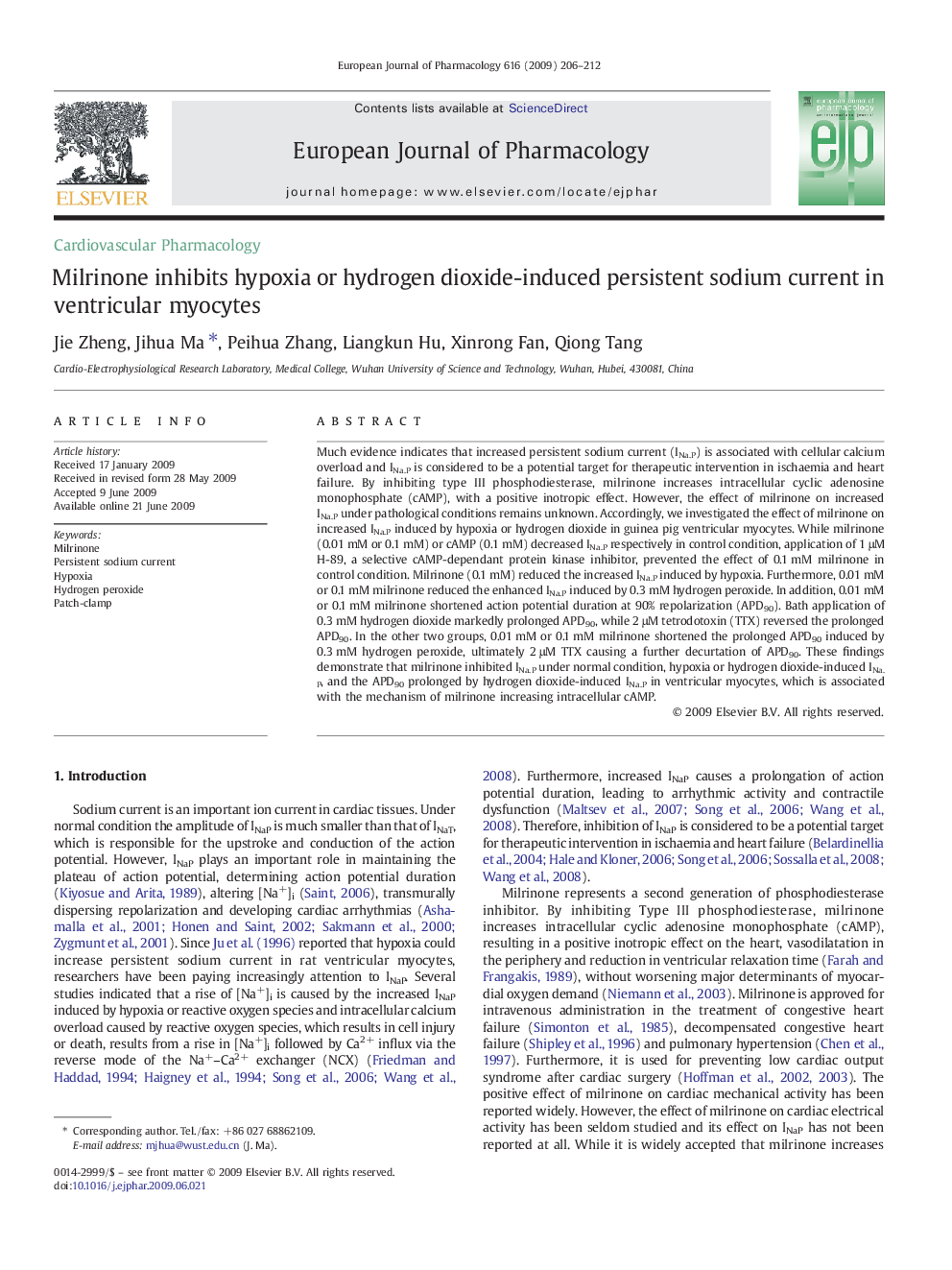| Article ID | Journal | Published Year | Pages | File Type |
|---|---|---|---|---|
| 2534161 | European Journal of Pharmacology | 2009 | 7 Pages |
Much evidence indicates that increased persistent sodium current (INa.P) is associated with cellular calcium overload and INa.P is considered to be a potential target for therapeutic intervention in ischaemia and heart failure. By inhibiting type III phosphodiesterase, milrinone increases intracellular cyclic adenosine monophosphate (cAMP), with a positive inotropic effect. However, the effect of milrinone on increased INa.P under pathological conditions remains unknown. Accordingly, we investigated the effect of milrinone on increased INa.P induced by hypoxia or hydrogen dioxide in guinea pig ventricular myocytes. While milrinone (0.01 mM or 0.1 mM) or cAMP (0.1 mM) decreased INa.P respectively in control condition, application of 1 μM H-89, a selective cAMP-dependant protein kinase inhibitor, prevented the effect of 0.1 mM milrinone in control condition. Milrinone (0.1 mM) reduced the increased INa.P induced by hypoxia. Furthermore, 0.01 mM or 0.1 mM milrinone reduced the enhanced INa.P induced by 0.3 mM hydrogen peroxide. In addition, 0.01 mM or 0.1 mM milrinone shortened action potential duration at 90% repolarization (APD90). Bath application of 0.3 mM hydrogen dioxide markedly prolonged APD90, while 2 μM tetrodotoxin (TTX) reversed the prolonged APD90. In the other two groups, 0.01 mM or 0.1 mM milrinone shortened the prolonged APD90 induced by 0.3 mM hydrogen peroxide, ultimately 2 μM TTX causing a further decurtation of APD90. These findings demonstrate that milrinone inhibited INa.P under normal condition, hypoxia or hydrogen dioxide-induced INa.P, and the APD90 prolonged by hydrogen dioxide-induced INa.P in ventricular myocytes, which is associated with the mechanism of milrinone increasing intracellular cAMP.
